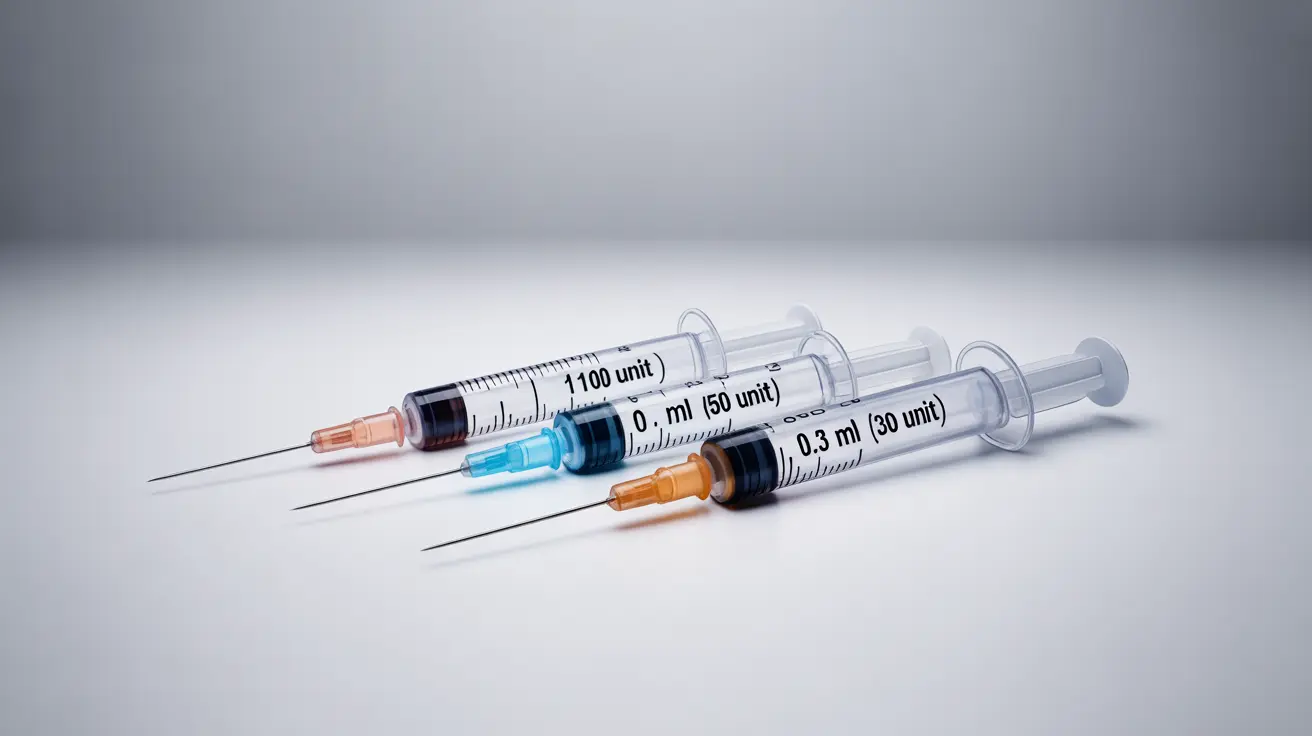For people managing diabetes, understanding insulin measurements is crucial for safe and effective treatment. One of the most common questions is how insulin measurements convert between milliliters (mL) and units, particularly when using standard U-100 insulin syringes. Let's break down these important measurements and help you understand how to measure your insulin correctly.
The Basic Conversion: Milliliters to Units
In U-100 insulin syringes, which are the most commonly used type in the United States, 1 milliliter (mL) equals 100 units of insulin. This standardized measurement makes it easier for healthcare providers and patients to ensure accurate dosing. Understanding this basic conversion is essential for proper insulin administration.
Understanding Different Insulin Concentrations
While U-100 insulin is standard in the US, it's important to know that other concentrations exist:
- U-100: 100 units per milliliter (most common)
- U-40: 40 units per milliliter
- U-500: 500 units per milliliter (for insulin-resistant patients)
Using the correct syringe type for your specific insulin concentration is crucial for accurate dosing and preventing potentially dangerous errors.
Insulin Syringe Sizes and Measurements
Insulin syringes come in various sizes to accommodate different dose requirements:
- 1 mL (100 unit) syringes
- 1/2 mL (50 unit) syringes
- 3/10 mL (30 unit) syringes
Each size features clear markings in units, making it easier to measure precise doses. The choice of syringe size should match your typical insulin dose to ensure accurate measurement.
Needle Specifications and Selection
Insulin syringe needles vary in both length and gauge (thickness). Common specifications include:
- Lengths: 4mm, 6mm, 8mm, and 12.7mm
- Gauges: 28G to 31G (higher numbers indicate thinner needles)
The choice of needle length and gauge can affect comfort during injection and insulin delivery effectiveness. Your healthcare provider can help determine the most appropriate needle specifications for your needs.
Frequently Asked Questions
How many insulin units are there in 1 milliliter (mL) for U-100 insulin syringes? In U-100 insulin syringes, 1 milliliter (mL) equals exactly 100 units of insulin.
What is the best way to convert insulin dosage from milliliters to units? For U-100 insulin, multiply the milliliters by 100 to get the units. For example, 0.5 mL = 50 units.
What sizes of insulin syringes are available and how do their measurements relate to insulin units? Insulin syringes typically come in 100 unit (1 mL), 50 unit (0.5 mL), and 30 unit (0.3 mL) sizes. Each size has clear markings showing both milliliters and units.
Why is it important to use the correct syringe type (U-40 vs U-100) for my insulin concentration? Using the wrong syringe type can lead to serious dosing errors. A U-100 syringe used with U-40 insulin will result in under-dosing, while a U-40 syringe used with U-100 insulin will result in over-dosing.
How does needle length and gauge affect insulin injection and syringe choice? Needle length affects how deep the insulin is delivered, while gauge affects comfort during injection. Shorter needles (4-6mm) are usually sufficient for most patients, and higher gauge numbers (thinner needles) typically cause less discomfort.
Remember to always consult with your healthcare provider about the proper insulin syringe type and size for your specific needs, and never make changes to your insulin administration method without professional guidance.




